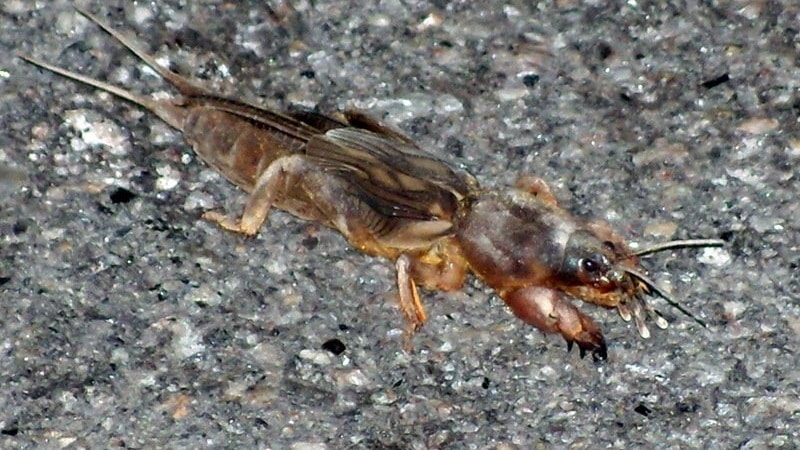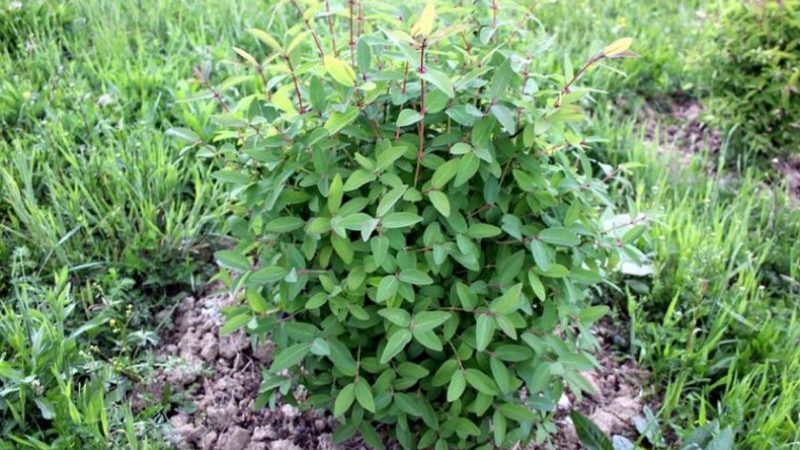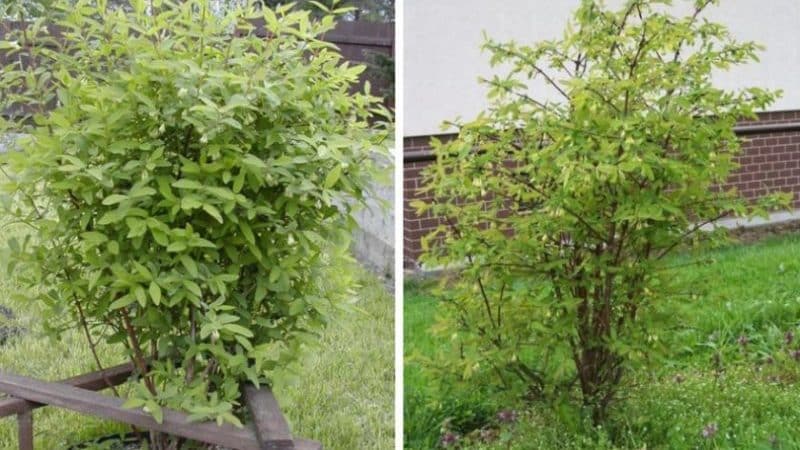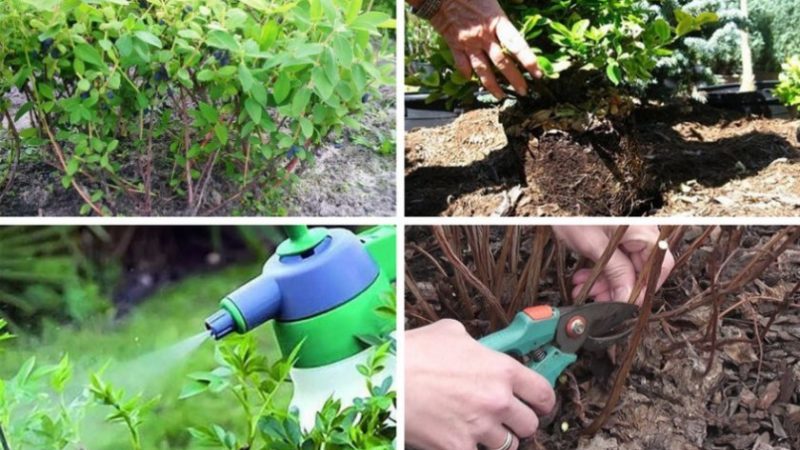Why honeysuckle does not grow - reasons and ways to solve the problem
Every year more and more gardeners plant honeysuckle in their dachas. The plant is easy to care for, and there are dozens of decorative and edible varieties. The crop is grown as a decoration for the garden plot: neat bushes are widely used in landscape design.
However, it happens that the bush grows slowly or does not take root well. Let's consider in the article why honeysuckle does not grow on the site and what to do about it.
Why does honeysuckle grow poorly on the site?

Despite the fact that honeysuckle is an unpretentious crop, it is recommended to properly care for it from the first days of its life. Right after landings summer residents organize watering, fertilizing, loosening and mulching of the soil. The procedures nourish and moisturize the roots of the plant, making the soil lighter and more nutritious.
However, sometimes even if all the rules are followed, honeysuckle grows slowly or does not develop at all, looks bad, does not bears fruit. There are several reasons for this: excess or deficiency of vitamins and microelements, waterlogging or lack of water, unsuitable climatic growing conditions.
We list the main influencing factors:
- Incorrect application of fertilizers. We are talking about both a lack and an excess of nutrients. A slowdown in growth is caused by excess phosphorus, the application of dry fertilizers, and the use of organic and mineral substances simultaneously.
- Excessive deepening of the seedling during planting. Honeysuckle is planted at a depth of no more than 40 cm.Otherwise, fertilizing does not reach the root system, which causes growth problems.
- Overmoistening - a common cause diseases and pests. It is especially dangerous in hot and dry weather.
- Sudden weather changes. If it's a cold and rainy summer, honeysuckle won't get enough sunlight and warmth. Because of this, metabolic processes are disrupted, which affects not only growth, but also productivity.
- Damage by underground pests and rodents. Honeysuckle is attacked by mole crickets, sawfly beetles, aphids, leafrollers. They gnaw the roots and bark of the plant, carrying dangerous microbacteria and fungal spores.
 Medvedka
Medvedka
In the first 2-3 years, honeysuckle grows slowly, so it is possible to judge whether the plant has taken root on the site or not only in the fourth or fifth year after planting.
Slowly growing

A common cause of slow growth is powdery mildew. A dangerous fungus causes a white coating to appear on the inside of the leaves, which eventually covers the entire plant.. Plants' leaves fall off prematurely and growth stops. Even if you cure honeysuckle from powdery mildew as quickly as possible, the next year you may still experience a slowdown in growth.
3–5 different varieties of honeysuckle are planted on the site for flowering and a good harvest. This is important for cross-pollination, otherwise there is a high probability of not getting a harvest at all. Before purchasing and planting, it is recommended to study the compatibility of different varieties. At the beginning of flowering, the bushes are sprayed with a sugar or honey solution to attract pollinating insects.
Doesn't take root
Another reason why honeysuckle does not take root on the site is an unsuitable place for growing. Experienced summer residents advise planting the plant on loose soils with neutral acidity, for example, in loamy or sandy loam soil. In advance, 4-5 months in advance, they dig a hole and fertilize it with organic fertilizers: rotted manure, vermicompost, a solution of bird droppings. Suitable neighbors for honeysuckle are garden greens, legumes, and low-growing berry bushes. Fruit trees should not be planted nearby, as they “take away” food and sunlight from the honeysuckle.
Attention! When planting honeysuckle, it is important to choose the appropriate variety. For example, Sinichka is moderately resistant to frost, so it is grown in warm regions; it is not suitable for planting in the Urals and Siberia. Honeysuckle Blue spindle, on the contrary, is frost-resistant and quickly takes root in any region.
Another reason for slow growth is unsuitable soil composition and structure. The plant reacts poorly to swampy and waterlogged heavy soils, which are located near groundwater. If there is too much moisture, the roots rot. Pay attention to the presence of sunlight: the planting site should be well lit. In shade or partial shade, honeysuckle grows slowly.
What to do if honeysuckle does not grow

So that honeysuckle pleases with beautiful flowering and delicious fruits, recommended in early spring start caring for her: organize watering 1-2 times a week, draw up a fertilizer schedule. Summer residents alternate organic and mineral fertilizers, use chicken manure, compost, urea, ammonium nitrate, double superphosphate. If the leaves turn yellow and fall off, there is an excess of minerals - in this case, the plant is not fertilized for 2-3 weeks.
Reference! To avoid problems with development, before planting, seedlings are soaked for several hours in the growth stimulator "Kornevin". It strengthens the plant's immunity and stimulates healthy growth.
Pay attention to loosening the soil and mulching. Loosen honeysuckle once every 10 days, before watering. Grass, hay, foliage, and pine sawdust are used as mulch. Mulch is a barrier to rodents and insect pests. 3 years after planting, they begin pruning and forming the crown.
If growth is slow, regularly inspect the bush for the presence of insects, rodents or diseases. Some pests reach a length of no more than 1 mm, so it is difficult to see them with the naked eye. Affected leaves and shoots are immediately sprayed with a solution of potassium permanganate or Bordeaux mixture.

Conclusion
Why does decorative or edible honeysuckle grow poorly on the site? The reasons are different: unprepared or acidic soil, weak or diseased seedlings, pests and rodents. To avoid problems, fertilize the planting hole in advance, soak the seedlings in a growth stimulator, and draw up a watering and balanced nutrition plan. Several varieties are planted in one area at once for successful cross-pollination.